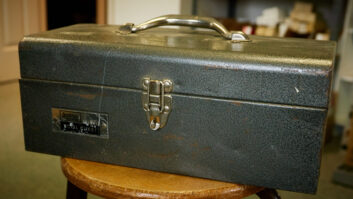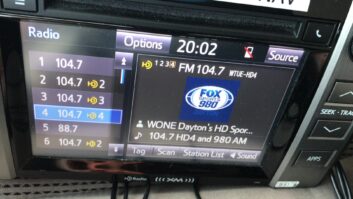ATLANTA Lincoln Financial Media operates an FM and AM radio station in Atlanta. Since 2000 the facility had been upgrading two on-air and five production studios with new audio consoles, replacing Pacific Research & Engineering series of ABX and BMX consoles that had been in use since 1989.
After upgrading six of the studios, we learned that the console to which we’d upgraded would no longer be manufactured or supported. So in 2006 we took a step back and determined we would need change our architecture.
Evaluations
I started evaluating the different types of networking consoles. I looked at functionality, transition of the studio and cost. The last consideration was the rehab process. Was I going to be able to refit one studio at a time?
After careful consideration, gathering as much information as I could, I came to the decision that Axia was the product for WSTR and WQXI.

The last studio that needed to be upgraded was a production room that had a PR&E ABX console with furniture. It would be our first to be outfitted with Axia, a perfect situation to test the new technology.
We started planning the layout, furniture, flooring, wall covering and Axia setup. In planning the studio we had to change our thought process. We needed to look at it as a network and not as a traditional setup.
When planning the Axia network, we created a subnet for an entire station configuration, not just the initial rooms. Every node, GPIO, Studio Engine, console, IP audio driver and switch needs an IP address. This studio would be a standalone Axia setup until the next buildout; but I planned the entire network setup as we grow into using Axia in the future.
After placing our order, our equipment arrived about 14 days later, about a month before our remodel. The system consisted of a Mic Node, two Analog Nodes (studio and equipment room), two Digital Nodes (studio and equipment room), a Studio Engine, a GPIO/power supply and console. With the system we also received two Cisco 2960 switches.
We had ample time to do our pre-setup before installing it. We removed all of the equipment for inspection and power-up. Each piece was powered and left standing for the first 24 hours. We had an issue with the power supply when the internal power supply burned up; tech support sent a new one.
Before we configured we found also that we could not initially get the Studio Engine above 100 Mbps of bandwidth. With a field repair we increased it to 1 Gbps.
To learn the system before the install, we completely set it up in the conference room. First we started with the programming of each node, Studio Engine, GPIO/power supply and console with the appropriate IP addresses. We then programmed the switches.
I had never done this, and the information on the Axia Web site was a real help. It gives good instruction on how to program the switch for the system configuration.
We then put the system through its paces. We connected microphones, CD players and the other audio devices. All worked well in the test phase.
We also installed an IP Audio driver in a PC and passed audio. The IP Audio driver replaces the external sound cards used by PCs. You have two choices: single IP Audio driver, which we used for the production PC, and the multiple audio driver, which we used for the automation system PC. You must add a second network interface card to be able to use this functionality. The NIC card’s IP would be part of the network configuration of Axia.
Configuration
Once we finished the test phase, we set forth into configuration, setting up the nodes for their specific use.
One thing I would recommend is the building of a wiring harness. I know that Axia is set up to run a Cat-5/6 from a node (RJ-45) to the audio source (XLR). After talking with engineers who were using Axia, we added a wiring harness to our system; all of the nodes I/Os and GPIOs have been punched down to terminal blocks.
Once the room had been rebuilt and the flooring, wall covering and furniture were in place, it was time to install the Axia system.
First we removed approximately 65 percent of the wiring that had been run between the studio and the equipment room. We ran two (primary and backup) new Cat-6 cables used to connect the switch in the studio with the one in the equipment room. For peace of mind, the main audio to and from the production studio is run through the nodes, but I continue to use one run of cable (Krone blocks) in case a node fails.
Once the system was in place and running, we put finishing touches on the configuration, creating show/personality profiles for those who use the studio. We were also able to adjust mic processing for each of the profiles. Then the production director was off and running.
We’re very pleased overall. And because of the prep work for the production room, the turnaround time from start to finish was approximately 120 hours.
The experience of remodeling the production room also carried over to the remodel of the FM studio, with lessons learned.
At present we have two studios running the Axia broadcast consoles and audio networking system, with plans to reconfigure the entire plant to Axia over the next two years.
Scott F. Trask director of engineering at WSTR(FM)/WQXI(AM), Lincoln Financial Media.
For information, contact Axia Audio at (216) 241-7225 or visitwww.axiaaudio.com.












